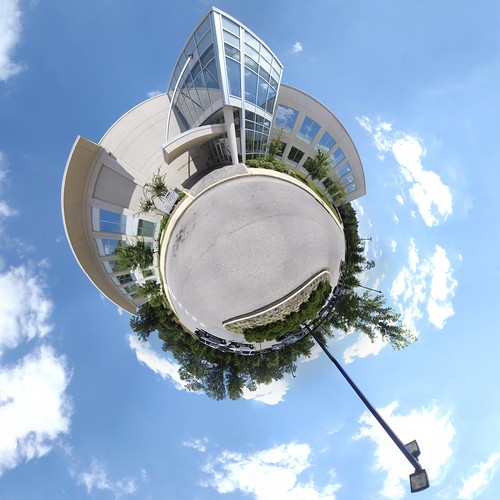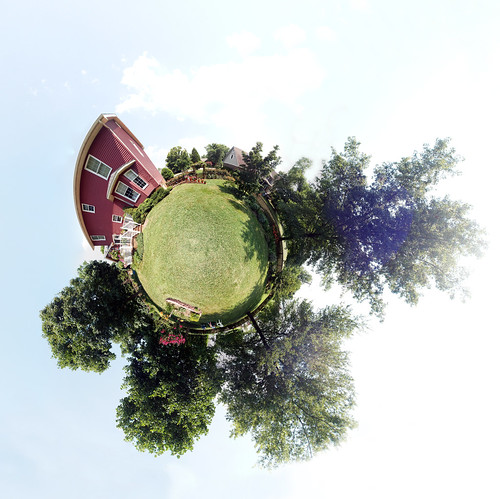If this is your first time seeing one of these "Wee Planets", it may seem a bit strange to wrap your head around (pun intended). This is basically a full 360° by 360° panorama.
It might make more sense if you view it projected equirectangular instead:
Once all the images are captured to fully view the scene in a full sphere, you can re-map the resulting panorama to any projection type you would like. In the case of the planet, the panorama projection was to be stereographic with one of the poles centered in the resulting image (the ground directly beneath my tripod).
These are a lot of fun to make, and can be quite striking once you are familiar with how they work. In my case I just used my tripod (no panoramic head), and proceeded to shoot 44 different overlapping images, creating a complete map of images surrounding my camera location.
Some people will advocate the use of a panoramic head, like the Nodal Ninja
I was in a park with no objects in my foreground, so I opted to not bother with a pano head, and just went with a normal tripod - figuring I would let the software work it out for me mostly. I am pretty pleased with the results overall (though I did need to manually tweak a few things, it wasn't too bad).
Speaking of which, the software I've been using for years is the open source project Hugin. This is basically my go-to software for just about any advanced image manipulation geometrically. I've used it for panoramas, of course, but I've also found it really useful for re-projecting other images and for correcting lens distortions when dealing with RAW files from my camera.
I'm not up to writing a tutorial just yet on how I approach these panoramas, but I will in the future. In the meantime, here is another of my office building (notice how objects/building closer to you will appear more prominently on the "horizon"):
And yet another in a backyard full of beautiful trees:
For more, check out the Group Pool of "Create Your Own Planets" on Flickr...








No comments:
Post a Comment